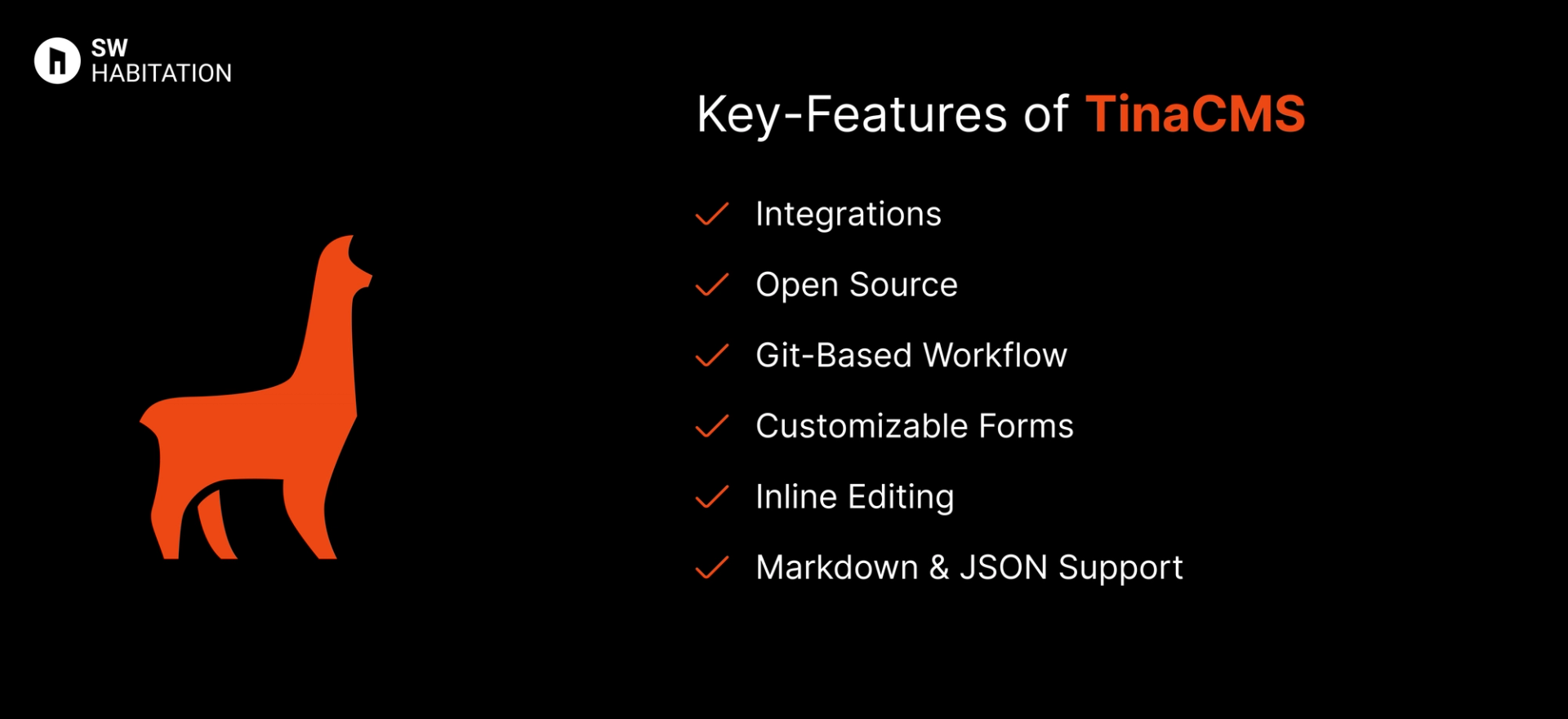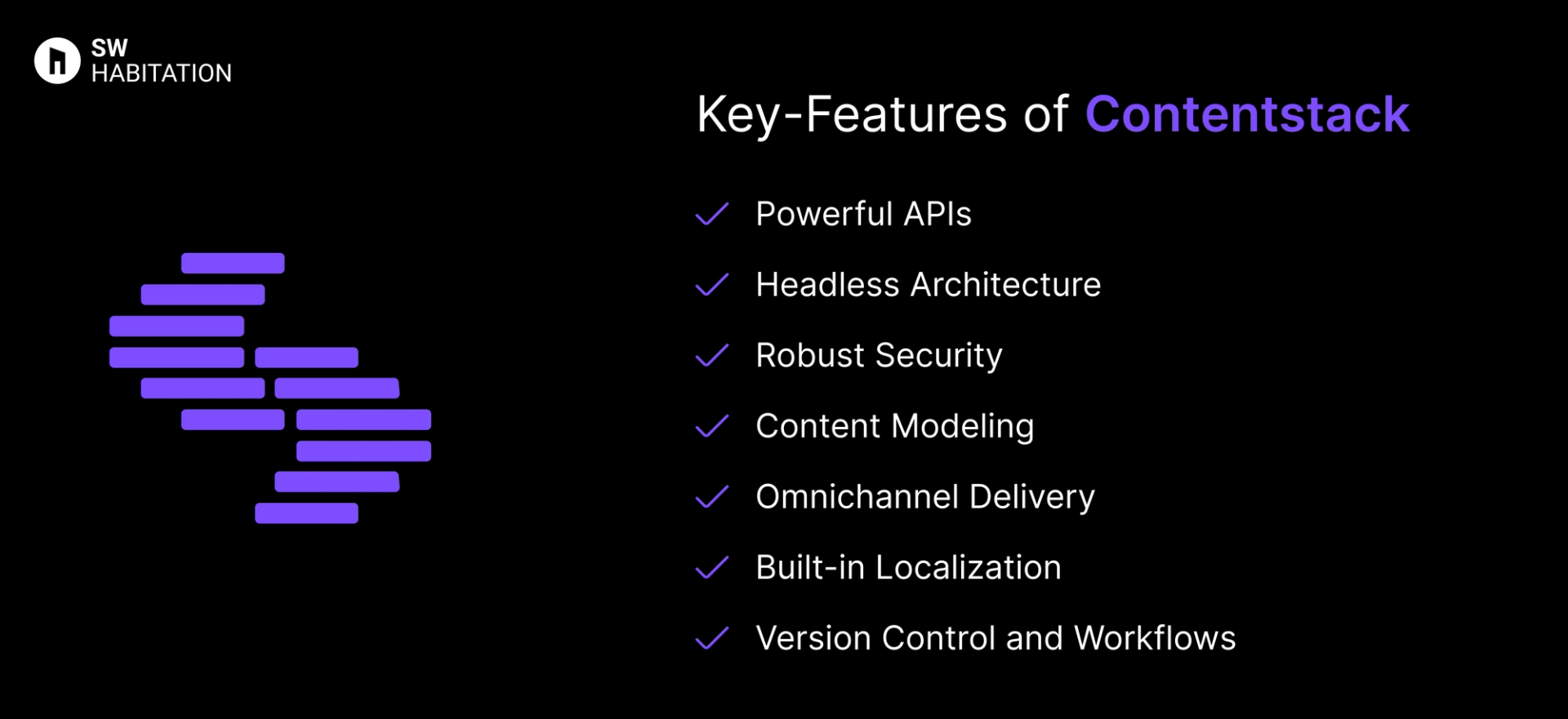TinaCMS vs. Contentstack

TinaCMS

Contentstack
You know, when you wanna make a website or a blog but don’t wanna mess with too much code? That’s where a CMS (Content Management System) comes in. It’s like a super easy tool that helps you add text, pictures, and videos to your site without needing to be a tech genius. You just log in, click a few buttons, and your content is live. It's quite simple, right?
What is TinaCMS?
TinaCMS is an open-source, Git-backed CMS that brings real-time editing to the forefront. It integrates directly into your site’s codebase, allowing content editors to make changes and see them live instantly. Think of it as giving your content team superpowers they can twist content without diving into code, while developers still enjoy full control over the project.
It’s especially popular in the Jamstack ecosystem, working well with static site generators like Next.js, Hugo, and Gatsby.
Key Features of TinaCMS


- Integrations: Works with Next.js, Gatsby, and other static site generators.
- Open Source: Free and community-driven, with no vendor lock-in.
- Git-Based Workflow: Content is stored in your Git repository, making version control simple.
- Customizable Forms: Easily create forms for content editing.
- Inline Editing: Make changes directly on the page and see them live instantly.
- Markdown & JSON Support: Works seamlessly with markdown and JSON-based content.
Advantages of TinaCMS
- Customizable: Adapt it to fit your project’s structure and needs. Free & Open Source: No hidden fees use it as you like.
- Jamstack-Friendly: Works beautifully with static site generators.
- Git Integration: Content is version-controlled with Git.
- Real-Time Editing: See changes instantly while editing.
Disadvantages of TinaCMS
- Limited Ecosystem: Smaller plugin ecosystem compared to more established CMS options.
- Git Knowledge: Editors might need a basic understanding of Git workflows.
- Developer Setup Required: Needs developer setup initially.
What is Contentstack?
Contentstack is a headless CMS built to help teams create, manage, and deliver content across multiple digital platforms.
Unlike traditional CMS platforms, Contentstack separates content management from presentation, allowing you to deliver content via APIs to websites, mobile apps, IoT devices, and more.
Its focus on enterprise-level content management. It’s built with scalability, collaboration, and performance in mind which makes it a top choice for large teams and large projects.
Key Features of Contentstack


- Powerful APIs: Integrate easily with front-end frameworks like React, Vue, and Next.js.
- Headless Architecture: Decouple content from presentation for maximum flexibility.
- Robust Security: Enterprise grade security features for peace of mind.
- Content Modeling: Design content structures that fit your project’s needs.
- Omnichannel Delivery: Publish content across websites, mobile apps, and beyond.
- Built-in Localization: Handle multi language content natively.
- Version Control and Workflows: Track content changes and manage workflows with ease.
Advantages of Contentstack
- Collaboration Friendly: Built-in workflow management makes team collaboration smooth.
- Highly Scalable: Handles large projects and complex content models effortlessly.
- Top-Notch Security: Enterprise-grade security features to protect your content.
- Omni-channel Support: Deliver content to web, mobile, IoT, and more from a single source.
- Powerful API: Integrates seamlessly with popular front-end frameworks.
Disadvantages of Contentstack
- Learning Curve: It can be a bit overwhelming for beginners.
- Pricing: Enterprise-level features come with an enterprise-level price tag.
- Overkill for Small Projects: Best suited for large scale projects.
Comparison Between TinaCMS vs Contentstack
Use Cases of TinaCMS
- Markdown Blogs: Perfect for blogs or documentation sites using markdown.
- Developer-Centric Workflows: Ideal for teams that use Git for content management.
- Real-Time Editing: Great when you want instant content updates.
- Jamstack Projects: Ideal for static site generators like Next.js and Gatsby.
Use Cases of Contentstack
- Enterprise Projects: Large-scale applications and websites.
- Omni-channel Content Delivery: Publish content across multiple platforms seamlessly.
- Collaborative Teams: Built-in workflows make it easy to manage multiple contributors.
- Complex Content Models: When your content structure is more complex.
Other Resources
Conclusion
Headless CMS platforms make managing your website very simple and easy. Whether you’re running a blog, online store, or business, they handle the tough stuff so you can focus on your content.
With a user-friendly interface and the ability to work with any technology, you can create a site that really fits your needs.
These platforms are flexible, secure, and can grow with you. They offer features like custom content, easy editing, and integrations with other tools. Choose the one that fits your requirements and start building your dream website today 🚀
Frequently asked questions
Is TinaCMS good for non-tech users?
While TinaCMS is developer-friendly, content editors will also love its intuitive, in-context editing experience. With some initial setup, non-technical users can easily manage their content.
Can I self-host TinaCMS or use the cloud?
You can self-host TinaCMS, which gives you full control over your content management system, or you can opt for the cloud version for convenience and reduced setup time.
Can I use TinaCMS with Next.js?
Yes, TinaCMS is fully compatible with Next.js and can also be used with other modern JavaScript frameworks. It's particularly great when working with static sites.
Does TinaCMS support Markdown?
Yes, TinaCMS is Markdown-centric and integrates seamlessly with your existing markdown files. You can edit content directly in your Git repository or via the in-line editor.
What is Contentstack?
It’s a headless CMS that lets you manage content separately from your website’s design. Great for big projects.
Is contentstack hard to learn?
Not at all. It’s user-friendly, but if you’re new to headless CMS, there might be a small learning curve.
Can I use contentstack with React or Next.js?
Absolutely, Contentstack works well with modern frameworks like React, Next.js, and more.
Is contentstack free?
It’s not free, but there’s a trial to help you see if it fits your needs before committing.
Does contentstack handle multi-language content?
Yes, it’s great for managing content in multiple languages!
